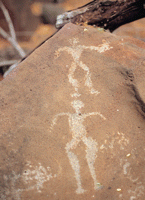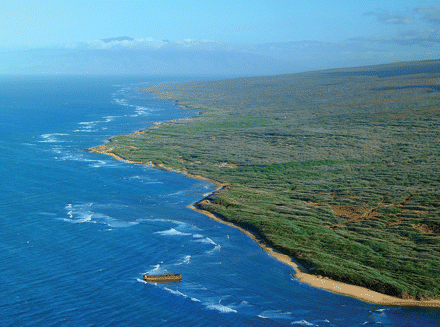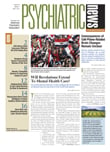Aloha is the Hawaiian word for the recognition of the breath of God in the person you are greeting; "alo" meaning to be in the presence of, and "ha" meaning breath or life. "Ohana" is the Hawaiian word for family. Aloha and ohana beautifully blend at the Four Seasons Ko'ele Lodge on the island of Lana'i. Off the beaten path, getting to Lana'i requires either a small propellor-driven plane or a boat from a neighboring island, plus a shuttle van to get to the hotel. But there is no better place to spend three luxurious days.
Legend has it that the demigod Maui pulled all of the Hawaiian Islands from the depths of the ocean while in a canoe paddled by his brothers, using a magic hook. Unfortunately, despite his warning not to look back, one of his brothers did so, and as a result, instead of pulling up an entire continent, he was able to pull up only the relatively small chain of Hawaiian Islands. One legend has it that while pulling up the island of Lana'i, his hook was broken, dislodged, and transformed into Molokini Island, a tiny crescent-shaped formation between the islands of Maui and Kaho'olawe.
Millennia ago, Lana'i, along with Maui, Moloka'i, and Kaho'olawe, may have been connected as part of a larger land mass called Maui Nui. Rising sea levels separated them by the Kalohi, Au'au, and Kealaikahiki channels. The first major wave of people to discover the Hawaiian Islands were thought to have sailed from the Marquesas Islands abut 400 A.D., with a second major influx, probably from Tahiti, occurring around 1100. Kealaikahiki means "the pathway to Tahiti," from which, through a remarkable southward merging of both winds and currents, ancient Hawaiian sailors are believed to have launched their return voyages.
Not until about 1500 was Lana'i eventually populated from the other major islands in the chain, initially by fishermen. The remains of the villages, fish ponds, and petroglyphs are visible around the island's shores. After the "discovery" of Hawaii by Captain Cook in 1778, Western ranchers and farmers tried to make a go of raising sugar cane and pineapple and sheep ranching.
Not until 1922, however, when James Dole purchased the island of Lana'i for $1.1 million from its previous owners and converted a struggling pineapple industry into a worldwide enterprise, did Lana'i become known as the Pineapple Island.
The pineapple fields are gone, but the Lana'i community remains to receive visitors with a gentle acceptance, caring for them with aloha, as members of Lana'i's "ohana," or family.
As malihini (newcomers), we were escorted from the plane to a waiting shuttle van for the three-mile journey upcountry—no traffic signals, one stop sign—to the tranquil Ko'ele Lodge. Upon arrival, staff greeted us with kukui-nut leis and cool towels. Like an English hunting manor, the peaceful, two-story wooden hotel of 102 guest rooms has a large great hall featuring nightly Hawaiian and contemporary musical entertainment, as well as a game room, library, excellent restaurant, and large breezeways for conversation or a good book.
Outside is a heated pool and two jacuzzis, and simply walking poolside summons attendants who offer bathrobes and towels and will cover a chaise lounge for you if you wish. Amid meadows and manicured gardens guests can indulge in lawn bowling and croquet and try their golf skills on an 18-hole putting course. Beyond the putting course is the Experience at Ko'ele, a championship golf course that meanders through mountain ravines and tropical forests, with occasional sightings of Axis deer passing through.
A two-mile hike (some prefer horse-back) on the Munro Trail beyond the golf course leads you past well-identified flora and fauna and rewards you at the end with stunning views of the northside valleys and beaches.
Accessible via a shuttle van is the Four Seasons Manele Bay hotel, situated adjacent to an ancient Hawaiian fishing village at the beach of Hulopo'e Bay, a protected marine reserve where spinning dolphins frequently frolic. The nearby, spectacular Challenge at Manele golf course offers three cliffside fairways that use the Pacific Ocean as the water hazard.
There are also several more modest lodgings on Lana'i.
With only 30 miles of paved roads, four-wheel-drive vehicles are essential to seeing most of the island. Rent one to explore Shipwreck Beach and nearby ancient Hawaiian petroglyphs, the ancient Hawaiian fishpond at Naha, and the Garden of the Gods, acres of colorful rock formations hewn by ancient eruptions and constant winds (though some say it was the result of a fiery battle leaving behind a scorched earth).
Our three-day stay at Ko'ele Lodge was a perfect respite. You too can partake of it before or after the annual meeting in Honolulu. The spirit of aloha and ohana in their purest forms awaits you.


